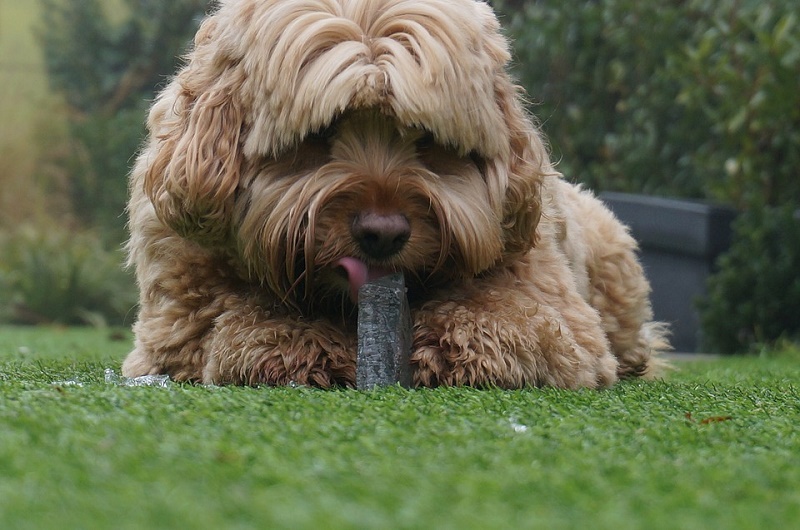 |
| ▲ Photo Source: Pixar Bay |
Palm oil is the most consumed oil in the world. What if this palm oil, which is more criticized by the destruction of the ecosystem than the nutritional aspect, is poisoning your puppy?
There is no accurate data proving that palm oil is toxic to dogs. However, four years ago, an incident on a beach in England spread rapidly throughout the world and became a threat to the health of dogs.
October 2013 Long Rock beach in Conwold, England. Lucy Garrett-Peel was strolling near her puppy, the mini-schnauzer Zanzi. Zanji wandered around. He began to eat some substance, and since then Zanji has not lived anymore.
According to Phil, the substance thought to have been consumed by the jasmine was like a white wax, which was spread all over the beach at the time. The odor smells of chemicals like diesel. The swallow, which swallowed the unidentified substance, was soon distressed and moved to a nearby veterinary hospital, but left the world that day despite immediate first aid. Pil said that the test results showed that the oil that was swallowed by Zanzim was a spoiled palm oil containing bad bacteria.
The death of Zanzi was quickly spreading and became an issue. News writes that palm oil, which has been criticized for destroying rainforests and disturbing ecosystems, has now become a lethal weapon to kill dogs. Afterwards, cases of dogs that died from eating toxic palm oil, or who survived first aid, were pouring out and putting dog guardians into horror.
At the conclusion of the congress, local councils and local organizations in other cities began cleaning the coastal area and set up a sign on the sand called "Palm Oil". In the same year, when about 0.25 tonnes of palm drops were found at Hampstead Beach, a handcart was mobilized for removal.
Go back to Long Beach in 2013. Longrock is where the Dover Strait is located, and it is worth noting why crops grown on farms in Southeast Asia, Latin America and Africa, thousands of miles away, were found there in England. Perhaps a chemical carrier at that time was probably the debris washed out of the cargo due to post-processing after the palm oil was transported to Britain.
Vessels generally use chemicals to clean the tank before loading the next shipment, which is, of course, a legitimate procedure. It only takes 12 miles (about 19 km) off the coast.
It was probably the remnants of palm oil that had been washed from a ship that brought the palm oil to the United Kingdom. However, according to the European Vessel Traffic Code, no ships were washed out using chemical products within 12 miles. It was also unclear whether the mass at the time was due to illegal emissions.
 |
| ▲ Photo Source: Pixar Bay |
Palm oil is obtained from the pulp of African palm trees and is the most commonly used vegetable oil on the planet. It is also used in cosmetics and snacks that modern people often buy in the market. It is also used as a biofuel and goes into pet feed as well. Palm oil is an indispensable necessity for us today.
The linkage of palm oil has yet to be officially confirmed. Cornishman, the local media of Cornwall who first announced the death of Zanzi, said the deadly palm oil was confirmed by the Public Health England. However, after the journalist Dion Watkins of the E-sv Times tracked the case, the public health department said that the case of Zanzi was not responsible for them, but that the Coast Guard had never analyzed the substance that the Zanthi had swallowed. did.
Unlike the report that the death of Zanzi was caused by palm oil, the evidence that palm oil itself was the cause of the death of Zanji was not proven.
However, it is argued that the exact mechanism that caused the death of Zanzi was not identified, but that the possibility could be raised. The British Veterinary Poisons Information Service pointed out that palm oil can be poisoned when it is washed in cargo tanks of ships and then tilted in temperature and bedrock and then moved from salty and contaminated seas to the beach. Hot weather can also be the best habitat for harmful bacteria to grow in dogs. Furthermore, if a dog swallows debris scattered on the shore and sticky liquid like solid in the sand, it is likely to suffocate and die. In conclusion, contamination of diesel, mixed with chemicals, mixed with coastal bacteria, and coming out of the marina, is a structure that is completely harmful to dogs.
In fact, the intelligence agency tested 30 dogs that survived on palm oil and survived. One of them had a weak cough for three days and the other recovered after seven days of aspiration pneumonia. The 11 most common side effects were vomiting, and other dogs had diarrhea.
![[Issue] Palm oil, deadly weapons of dogs? issue palm oil deadly weapons of dogs](https://moontore.com/wp-content/uploads/2019/02/issue-palm-oil-deadly-weapons-of-dogs-1200x700.jpg)


